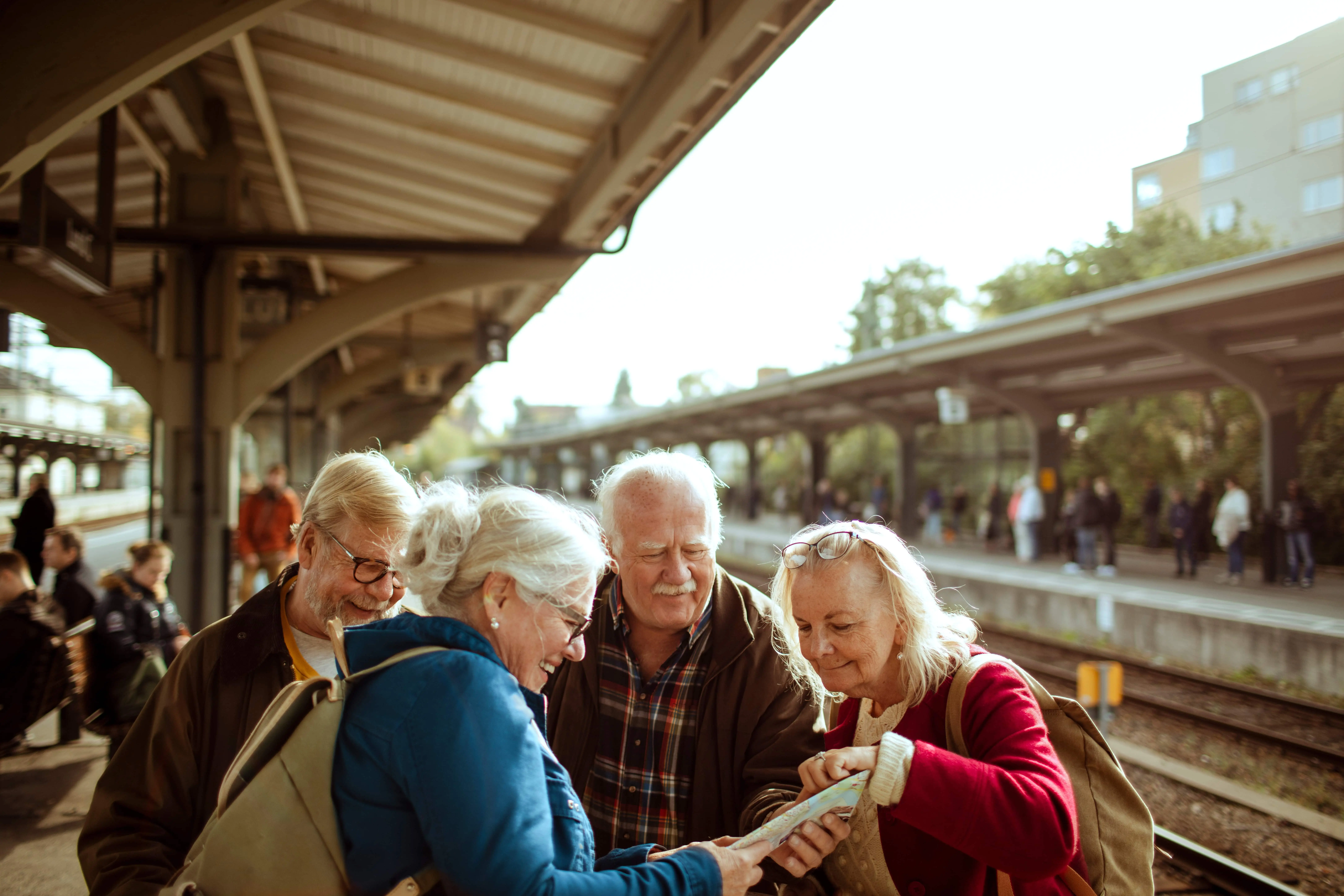Since the opening of the Stockton & Darlington line in 1825, railways have shaped towns and cities across Britain. Small settlements such as Peterborough and Swindon became thriving urban centres, while railway hubs like Derby, Crewe and York emerged around the railway tracks.
Railway companies once played a major role in shaping these areas, offering housing, schools, and social clubs for employees and their families. Some of these contributions left enduring legacies such as Newton Heath LYR Football Club, founded in 1878, which eventually became Manchester United.
As rail workers organised into trade unions and independent societies, these communities grew stronger and more self-reliant, extending beyond their employers’ influence. Although the railway industry has evolved, its impact endures. From heritage railways and station adoption programmes to railway workers supporting local initiatives, the sense of community fostered by the railways still remains strong.
The navvies - the first railway community
Tens of thousands of ‘navvies’ were instrumental in constructing Britain’s railway network. Originating from the term ‘navigators’ - a reference to workers who had previously constructed canals, many navvies came across Britain, Ireland, and mainland Europe, moving from site to site as projects advanced.
Navvies and their families lived in temporary trackside settlements, often enduring harsh conditions. Their tight-knit communities grew through shared hardship.
They played a key role in building major railways, including the world’s first inter-city railway, the Liverpool and Manchester Railway in 1830. Navvies worked through tough terrain, excavating the Olive Mount cutting and overcoming the Chat Moss bog. A crucial part of the workforce, they shifted up to 20,000 tonnes of earth each day.
By the late 19th century, navvies were essential to large-scale railway projects, such as the Hull and Barnsley Railway. Around 8,000 workers from across England, Scotland, and Ireland helped construct over 100 bridges. This gives us a clear idea of the sheer scale of their labour.
While some Victorians were wary of navvies due to their transient lifestyle, their contributions to Britain’s railway infrastructure were profound. Today, some Irish and traveller communities trace their heritage back to these pioneering railway builders.
Community identity and heritage
The railway’s influence remains woven into British towns and cities, reflected in place names, landmarks and traditions. Approximately 300 pubs are called ‘The Railway’, while ‘Station Road’ is one of the country’s most common street names, with around 2,000 examples.
Some unexpected locations still reflect railway connections, for example ‘Bumble Hole Lane’ in Dudley is named after a railway which operated between 1878 - 1964.
Many stations celebrate their heritage through public art. Crewe Station, features Tracks are our Veins, a poem by local writer Gareth Williams, which celebrates the town’s deep-rooted railway identity.

Railway communities today
Today, railway enthusiasts, volunteers and preservationists keep Britain’s railway heritage alive. More than 170 heritage railways operate across the country, running steam and diesel services, hosting events, and restoring historic locomotives.
Many of these railways rely on volunteers, while others provide employment. They ensure traditional railway skills are being passed down to future generations. Railway museums also play a key role in safeguarding this history. The Crewe Heritage Centre, built on the former Crewe Locomotive Works site, is just one of the many museums across the UK. These museums preserve stories of the communities that grew alongside the tracks.
Stations as hubs of community activity
Railway stations have historically been focal points for their communities, and many continue to serve new purposes today. Disused station spaces now house art galleries, libraries, and wellness centres, bringing new life to historic railway buildings.
Stations frequently support local causes by offering free advertising for community groups. Volunteer initiatives like ‘Station Friends’ and ‘Station Adoption’ involve thousands of people who enhance stations with gardens, wildlife areas, and local projects; these initiatives help stations remain welcoming and vibrant spaces.
Railway workers and community connections
Railway workers are closely connected to the communities they serve, often forming lasting relationships with passengers and local residents.
Station staff are key figures in supporting travellers - assisting with lost property, arranging medical aid in emergencies, or simply offering guidance to those in need. Railway workers also engage with communities through charity work, school visits, and public safety education. By volunteering their time and expertise, they help strengthen ties between the railway and its passengers.
Railways and vulnerable communities
For some vulnerable people, the railway can be a place of refuge or support. Charities like The Railway Children help young people who are homeless or at risk of exploitation, offering protection and support.
Some train operators, including Avanti, provide free travel to those escaping domestic abuse, ensuring they can reach safety without financial worries. Additionally, staff, passengers and police work together to prevent distressing incidents on the network and play a role in safeguarding lives.

Campaigning for railway services
Communities across the UK have campaigned to protect and restore local railway services, achieving notable successes in recent years.
The Dartmoor Line, which reopened in 2021, was the first to be reinstated under the government’s Restoring Your Railway initiative. Following years of dedication from local campaigners, including volunteers from the Dartmoor Railway Association, it reconnected Okehampton and Exeter.
Support from the Devon & Cornwall Rail Partnership also played a key role. They helped to coordinate efforts alongside Great Western Railway and Network Rail to bring the line back into service.
Similarly, the Northumberland Line welcomed back passenger services in December 2024. This reintroduced the service between Newcastle and Ashington for the first time in 60 years.
The project was the result of persistent campaigning by local communities and authorities determined to restore a vital transport link. The £300 million renovation overcame delays and rising costs, including the construction of a new road bridge at Newsham.
With additional stations set to open in 2025, this project has restored essential connections to employment, education and services. These achievements highlight the power of community-led campaigns in shaping Britain’s rail future.
Community Rail Network
The Community Rail Network emerged from grassroots efforts to protect and improve neglected railway lines. As local groups worked to preserve the railways, the movement gained recognition in 2004 as an essential part of Britain’s transport network.
Today, over 75 Community Rail Partnerships (CRPs) cover a third of Britain's railway network. These partnerships have improved services, enhanced station facilities, and introduced innovative community projects. The Bentham Line, for example, was adapted to become Britain’s first dementia-friendly railway, offering additional support for passengers with memory loss.
Train operating companies, including Avanti work closely with CPRs to ensure community voices shape rail development. Avanti’s 18 Community Rail Partnerships help connect local perspectives with railway planning, ensuring service meets regional needs.














